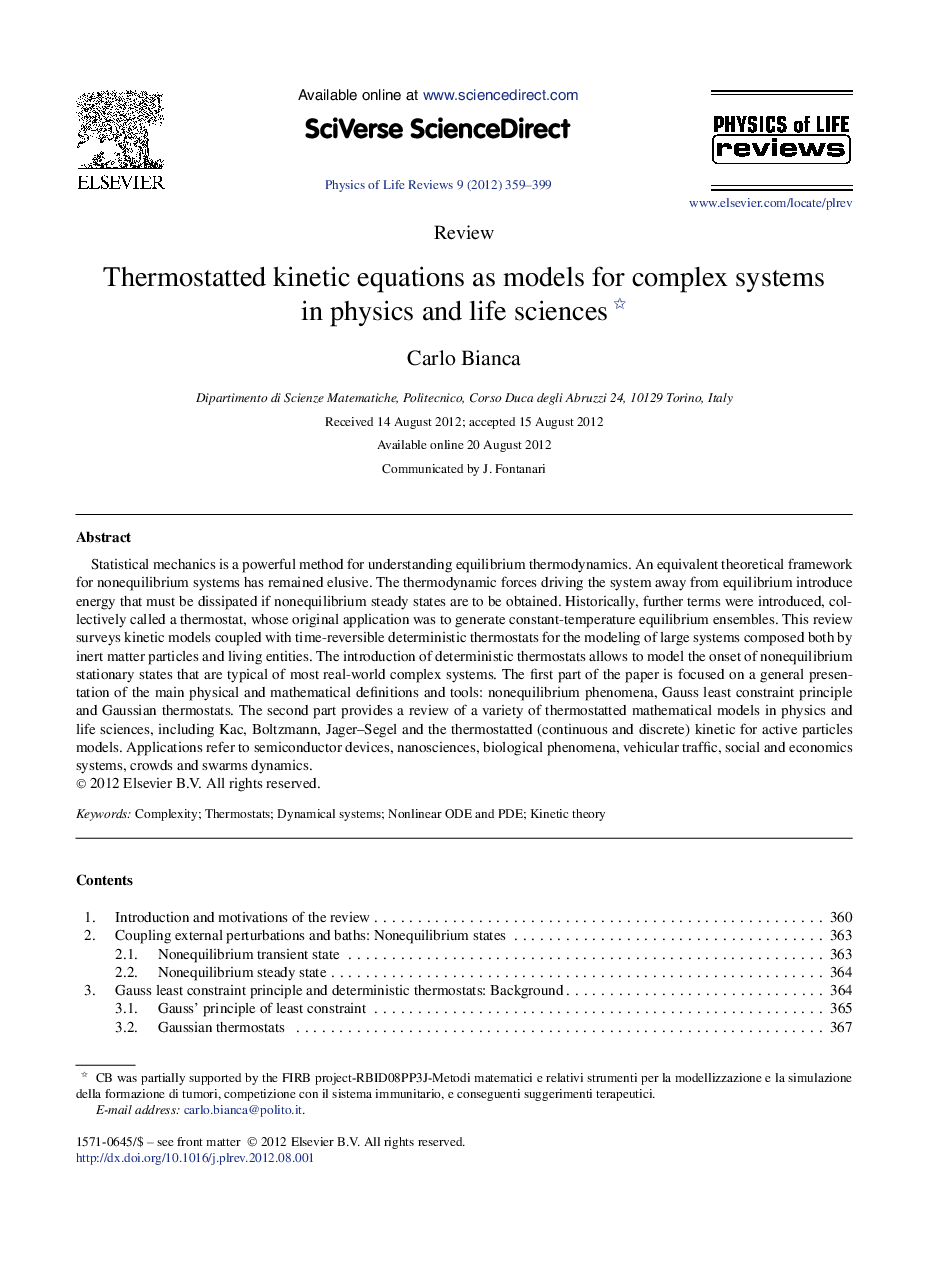| Article ID | Journal | Published Year | Pages | File Type |
|---|---|---|---|---|
| 1874285 | Physics of Life Reviews | 2012 | 41 Pages |
Statistical mechanics is a powerful method for understanding equilibrium thermodynamics. An equivalent theoretical framework for nonequilibrium systems has remained elusive. The thermodynamic forces driving the system away from equilibrium introduce energy that must be dissipated if nonequilibrium steady states are to be obtained. Historically, further terms were introduced, collectively called a thermostat, whose original application was to generate constant-temperature equilibrium ensembles. This review surveys kinetic models coupled with time-reversible deterministic thermostats for the modeling of large systems composed both by inert matter particles and living entities. The introduction of deterministic thermostats allows to model the onset of nonequilibrium stationary states that are typical of most real-world complex systems. The first part of the paper is focused on a general presentation of the main physical and mathematical definitions and tools: nonequilibrium phenomena, Gauss least constraint principle and Gaussian thermostats. The second part provides a review of a variety of thermostatted mathematical models in physics and life sciences, including Kac, Boltzmann, Jager–Segel and the thermostatted (continuous and discrete) kinetic for active particles models. Applications refer to semiconductor devices, nanosciences, biological phenomena, vehicular traffic, social and economics systems, crowds and swarms dynamics.
► We review kinetic models coupled with the Gaussian isokinetic thermostat. ► Thermostatted Kac, Boltzmann, Jager–Segel and kinetic for active particles models. ► Modeling nonequilibrium stationary states. ► Existence and uniqueness of solution results. ► Applications: Immune system, crowds and swarms dynamics, social and economic systems.
